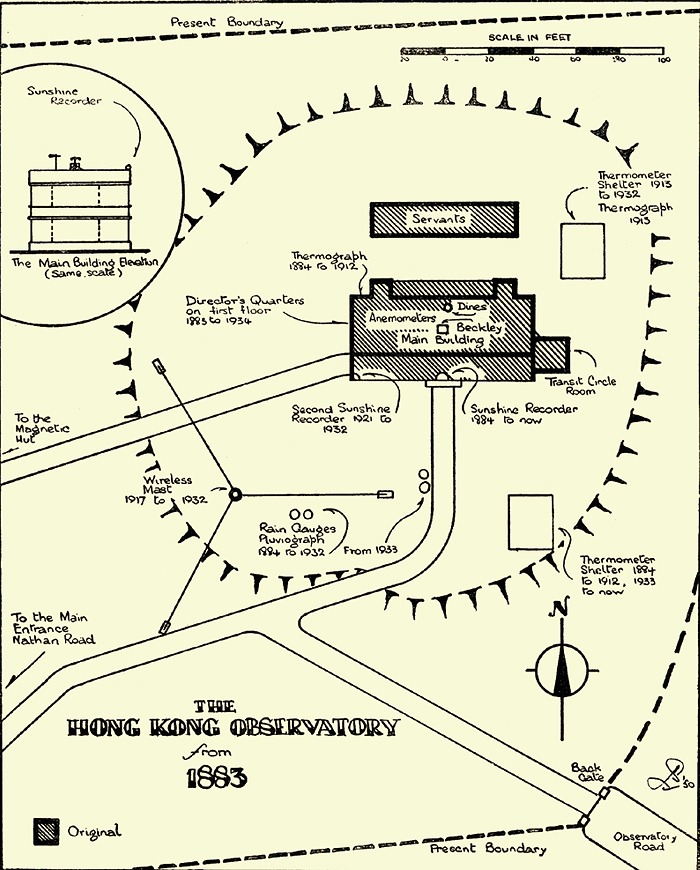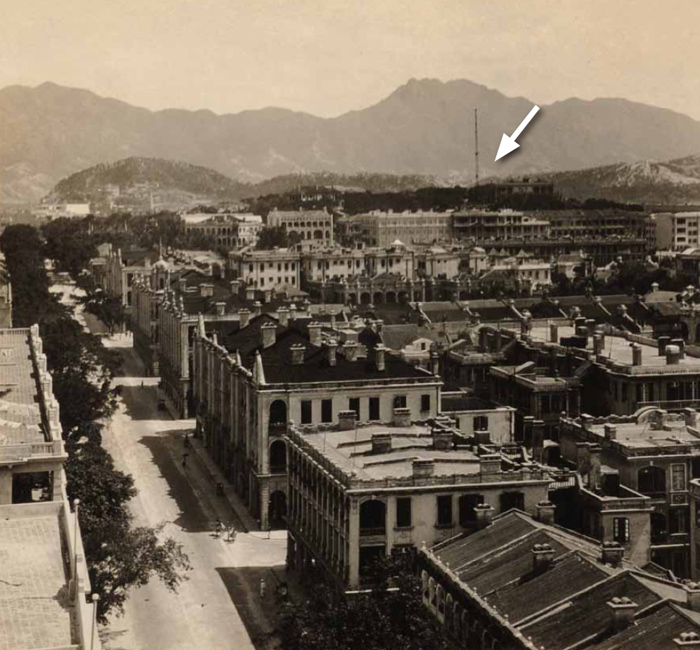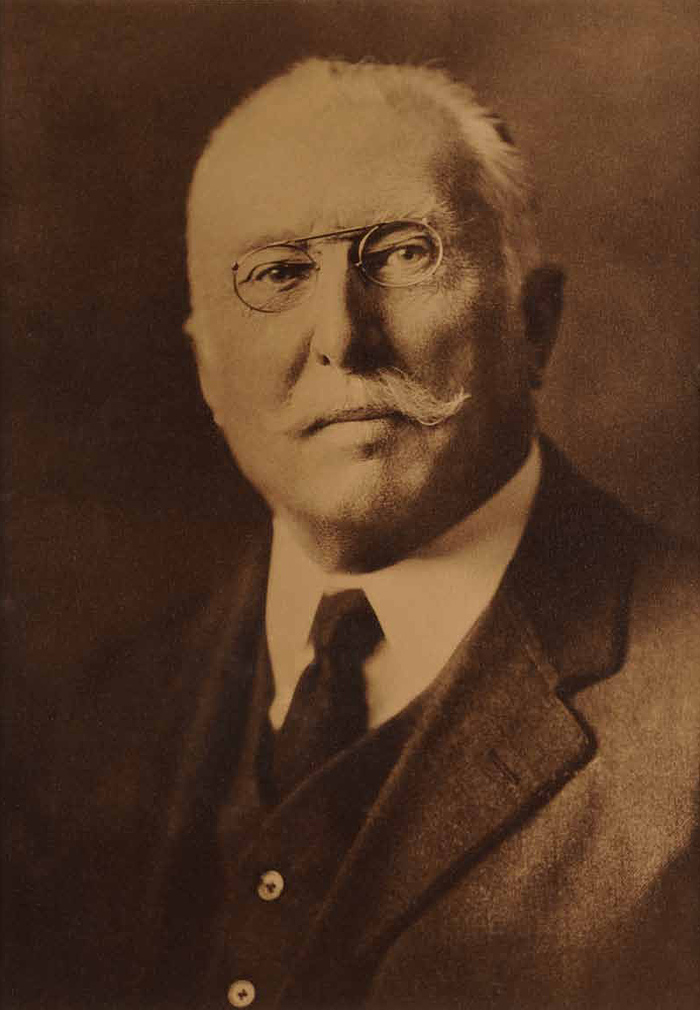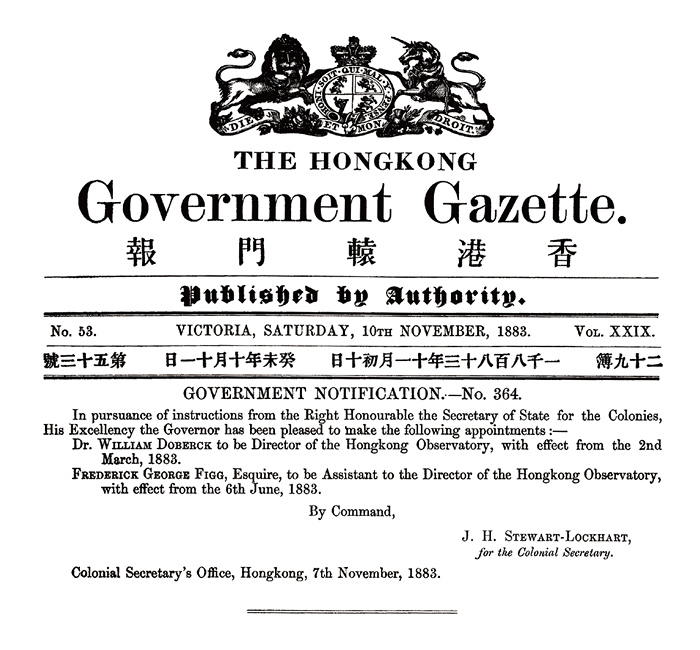HKO - Under the Same Sky 130 Years - Display Area 2
Display Area 2 : The Birth of the Hong Kong Observatory
Display Area Introduction
After a typhoon caused heavy casualties in Hong Kong in 1874, the Royal Society in Britain proposed that a meteorological observatory be set up in Hong Kong for providing typhoon warnings to vessels and people in the territory. Being an important commercial shipping hub, Hong Kong also assumed the responsibility of providing time services to vessels for the calibration of their marine chronometers. Against this background, the Hong Kong Observatory was founded in 1883, rendering time service and carrying out meteorological observations, as well as geomagnetic measurements. Its Chinese name was probably modelled on the Zi-ka-wei Observatory founded in Shanghai in 1872, the scope of which was similar in nature to that of the Hong Kong Observatory.
A map showing the location of the Hong Kong Observatory in 1883.

This photograph, looking north from Hong Kong Island to the Kowloon Peninsula, captures the silhouette of the Hong Kong Observatory in 1886. (exact location is indicated by the circle in close-up)

Mount Elgin, on Kowloon Peninsula, is the name of the low-lying hill marking the Observatory's location. A standing signal mast (see arrow) can be seen. The location was an ideal vantage point for making meteorological observations. This photograph was taken in the 1920s.

Dr William Doberck was the first Director of the Hong Kong Observatory with effect from 2 March 1883. On 28 July that year, Dr Doberck and his assistant Mr Frederick Figg arrived in Hong Kong, commencing the preparatory works for setting up the Observatory.

A broad view of Tsim Sha Tsui in the 1910s. Nathan Road is on the lower left and Signal Hill can be seen to the right near the middle with the distinctive Time Ball Tower perched atop it.
Collection of the Hong Kong Museum of History

